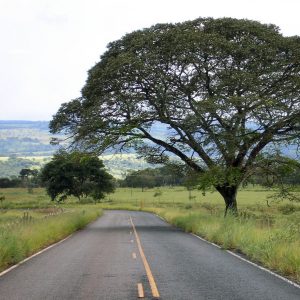Six Leading Commodity Groups Agree to Come Clean on Cerrado Impact
When Jair Bolsonaro defanged Brazil’s federal environmental regulatory apparatus, hope fell to international commodity buyers and individual Brazilian states. Although neither can substitute for federal regulation, each has stepped up in its own way – most recently with a pledge to provide transparency on soy sourcing.

This story is compiled from press releases
8 March 2019 | Brazil’s Cerrado is a vast savanna that mops up massive amounts of carbon and acts as a bulwark against climate change. Like its better-known neighbor, the Amazon forest, the Cerrado faces increasing incursions from unsustainable agriculture, and President Jair Bolsonaro has vowed to roll back environmental protections across the entire economy.
Until a stronger environmental regime emerges, environmental protection relies on Brazilian states and international buyers of goods, which is why it’s so important that six major commodity companies have agreed on a common framework for monitoring soy supply chains in 25 deforestation “high risk” municipalities from the Cerrado.
Members of the Soft Commodities Forum (SCF) – a global platform of leading commodity companies including Cargill, Bunge, Louis Dreyfus Company (LDC), Archer Daniels Midland (ADM), Glencore Agriculture, and COFCO International, a Chinese firm – have agreed to monitor and publish data concerning trading company soy supply chains from those Cerrado municipalities facing the “highest risk of conversion of native vegetation to soy,” according to an SCF statement. The Soft Commodities Forum is a subset of the World Business Council for Sustainable Development (WBCSD).
The definition of what exactly “high risk” means, will be determined by the Cerrado Working Group (GTC), an entity comprised of the commodities industry, NGOs, producer organizations, Brazilian consumer goods companies, financial institutions and the government.
“Sourcing in these municipalities will be reported in percentages of direct purchase from farmers, and indirect purchase from parties like aggregators, cooperatives and third parties,” a Cargill representative, told Mongabay. The first report by the SCF partnership will be published in June.
To start, the six companies are committed to monitoring supply chains in 25 Cerrado municipalities, says David Cleary, director of global agriculture at The Nature Conservancy (TNC), an NGO. TNC works with soy traders, helping them implement their deforestation commitments. The agreement is important, says Cleary, not least because it came through the SCF, which involves six major traders. “They have a significant weight on the market, it means a lot that they did this together, rather than on an individual basis,” he says.
“The Soft Commodities Forum facilitates the first time leading global commodity traders are working together in a pre-competitive project to address sustainability risks they all share, but which no single company can resolve alone,” says Diane Holdorf, managing director for Food & Nature at WBCSD.
However, many industry analyists, though pleased by this seeming progress, are reserving judgement on the agreement’s significance. It is too early to assess the announced measures properly, with much depending on the definition used to select “high risk” municipalities, explained Tiago Reis, a PhD researcher on agricultural supply chains at Université Catholique de Louvain: “The devil is in the details. But it looks like a step forward,” he said.
The Brazilian Cerrado once covered two million square kilometers (772,204 square miles), an area bigger than Great Britain, France and Germany combined, stretching to the east and south of the Amazon. But today, more than half its native vegetation is gone.
The main driver of this destruction is the flourishing soy industry. The high demand by the European Union and other nations for the valuable bean has directly and indirectly led many producers to convert the Cerrado’s biodiversity-rich dry forests and bushland into vast soy plantations, sometimes crossing legal boundaries to do so. In recent months, the demand for Brazilian soy continued rising further, partly the result of the lingering US-China trade war.
Conservation NGOs and scientists have been lobbying for a more comprehensive protection of the Cerrado for years now, and demanded a similar framework to the 2006 Soy Moratorium in the Amazon – a voluntary agreement by which transnational commodities companies such as Bunge, ADM, Cargill, and Amaggi, along with other actors, agreed not to source soy from newly deforested areas within Legal Amazonia.
Studies suggest that the Amazon Soy Moratorium has been successful in keeping Amazon deforestation rates low, with the expansion of agriculture slowing down significantly following a peak in 2004. However, in contrast to the Amazon, where the moratorium was in place, conversion rates from native vegetation into pastures and soy plantations has increased dramatically in the so-called Matopiba region – a large section of the Cerrado biome comprised of Maranhão, Tocantins, Piauí, and Bahia states and an area characterized by extensive agricultural development.
One recent study, in fact, suggests that the Amazon Soy Moratorium was partly to blame for the surge in soy production in the neighboring Cerado. Vivana Zalles, doctoral candidate at the Global Land Analysis and Discovery (GLAD) lab, has studied the “leakage” of deforestation from the Amazon to the less well protected Cerrado, a phenomena undervalued for a long time.
Also undervalued until recently was the Cerrado’s carbon storage capacity. That’s because the savannah biome lacks the vast aboveground rainforests of the Amazon. Instead its plants grow largely downward into unseen but extensive root systems, “a forest upside down” that functions as an important carbon sink and curb against climate change. Further, the biome is home to more than 10,000 plant species, over 900 birds and 300 mammal species, all increasingly threatened if deforestation should continue at the present speed.
Please see our Reprint Guidelines for details on republishing our articles.

